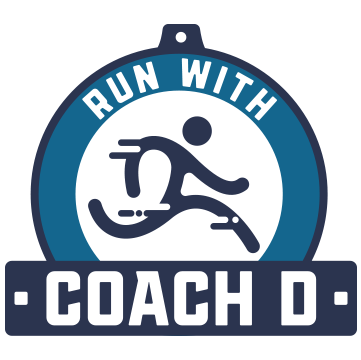Time vs. Distance: How Should You Measure?
Image source: Ralph Navarrete (@ralph.navarrete) on IG
The universal greeting for most runners usually starts with: What’s your miles per week? In no other sport is sweat equity and bonafides measured so simply and eloquently. But in a practical sense, milage isn’t always the best bar to reach or measure of fitness. In some cases it can even be detrimental to an athlete. Let me explain…
It’s mentally easier
Most runner’s (myself included) decide how many miles per week to run right after they set up a goal race. But running based on hitting a weekly mileage isn’t consistently realistic for most. If your goal is to run 50 miles/week for your upcoming marathon, but you’re only able to peak out at 40 miles/week because of time constraints you’re probably going to feel disappointed and under trained. Now sub out 50 miles a week for about 5-6 hours of running per week and things seem way more reasonable. Maybe you don’t consistently hit 50 miles, but based on your paces you’ll constantly hit 40-50 miles and feel good about doing it. Know why? Because you were realistic with your time, ability, and goal. Now you’re going into your race fit and feeling confident.
Also, the miles you run each week can, and should, change based on your phase of training. Running for time allows runners to take a step back from running hard all the time to hit an arbitrary distance and substitute it for specific amounts of running at specific intensities (80/20 rule is a prime example of this)
It’s an Ego buffer
Whether we’re coming back from an off season, injury, pregnancy, or illness, our Ego can force us to try and get right back where our past selves were. If you were hitting 35 miles/week or crushing 14 mile long runs pre lay off then why not jump right back into it? Because you’re not there right now, and trying to get back to running a past number means nothing to your body and doesn’t signify fitness.
Instead, take the pressure off and start with 30 min. Then do 40 min, then 50min. It’s a simpler way to get back on your feet without comparing yourself to yourself or others. It’s boring I know, but you know what else is? Sitting on the coach for another month because you have shin splints from running too far too soon.
It’s great for beginners
New runners can feel ton’s of anxiety trying to hit a goal distance. They may be training to hit 10 or 20 miles in a week, but starting at 1-2 miles on a single run can make that goal seem so far away. It’s easy to see why someone might quit before they get there. That’s why most of my new runners use time and not distance to build up their mileage and fitness. I may give a new runner a 30 min easy run or a walk run. In that workout they will probably hit 1.5-2 miles, and love every moment of it. Because they’re not just going for an arbitrary distance, they know how long they’ll be running for and won’t be worried about pushing too hard for that extra .2 they may have missed. They’re also not comparing their distance to more experienced runners and can focus on just being 1% better than yesterday.
It teaches the feel for pace
Have you ever tried running a workout pace by a perceived effort instead of looking at your pace all workout? Probably not, but you should try it. By using our perceived exertion, breathing, and effort, instead of pace during a run or workout we can become more familiar with what it’s like to run at the pace. This can come in handy on race day because sometimes we don’t have our GPS to guide our effort or constantly looking at our pace can keep us from getting in a zone. Going by feel can keep you focused and intune with your body. Set your watch on the clock (like I do) and keep your eyes off your distance and pace until after the run.
It takes the stress out of marathon long runs
So many of my marathon runners have this idea that they need to hit 20 miles in a long run for them to be ready to race an actual marathon. Sure, some fast runners can realistically do this, but their 20 mile run might take them 2-3 hours tops. What if you’re a 5-7 hour marathoner? 20 miles will take you over 4.5 hours! That’s just not realistic and put’s those in that time frame at greater risk of injury.
Instead of 20 miles you need to think about time on foot. If your marathon is over 5 hours, then running 180 min is the max I allow my athletes to run. This gets you time on foot to match the demands of marathon racing but isn’t an all day run that will probably end with you feeling washed and more tired than your actual race.
Honestly running for distance is great too, but it has a time and a place in training. As a running coach I far too often see runners who only want to hit a weekly mileage or long run goal. But ask any of my current athletes why running for time changed their perspective on training and they’ll back it up with how much fun they had running and how good they felt post race. They’ll even brag about some personal bests ;)
So why not give it a go? Make time for time.

